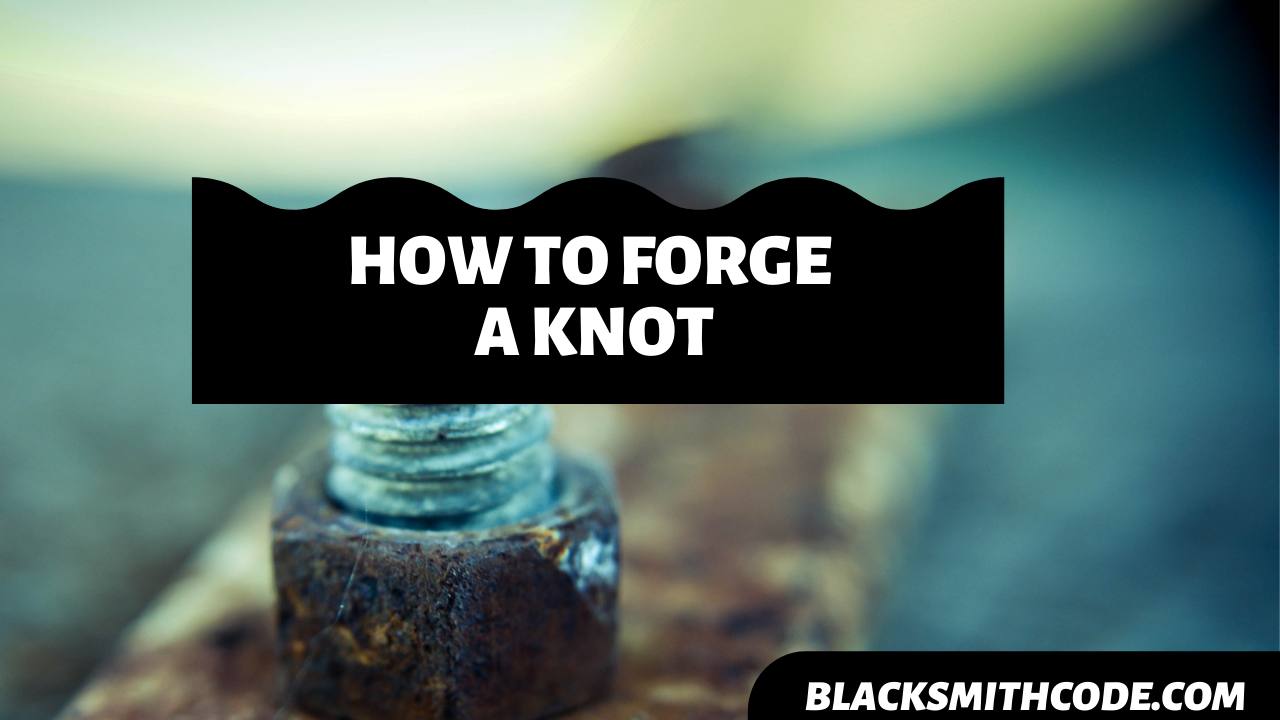Just like ties, have you ever considered knotting metals? For most onlookers, forging a knot from metals appears like magic. But to blacksmiths, anything is possible with forge and hammers.
The outlook of a metallic knot makes it appear tasking to forge. The assumption for its complication is a result of its irregular outlook. Also, the outward appearance of a metallic knot might scare off the faint-hearted.
The good news is; forging a knot is not as complicated as it appears. Learning how to forge a knot is a crucial addition to the cabinet of your blacksmithing skills. The steps below will help you through the process of forging a knot.
However, before dissecting the information about the process, you should be aware that you need to gather essential tools for the process. These essentials will make the process easier and faster.
Instructions on How to Forge a Knot
Step 1: Get Your Material
The pioneer step for most blacksmithing processes is getting the right materials. For the forging process of a knot, the use of a steel rod is most appropriate. It would be best if you got a steel rod of appropriate length for the process.
The length of the rod you are getting is largely dependent on the type of knot and the number of twists you intend to make.
Step 2: Heating
Heat the steel rod to a workable temperature. Ensure that you heat the steel properly before attempting to move to the next step. Without proper heating, the coming steps might be difficult or impossible.
Step 3: Bend the Steel
It is time to put your bending tool to use. The best bending tool to use is one that has two points to allow easy twist. Also, the temperature of the steel must be optimum to allow flexibility.
Quick Steps
- Remove your steel from the forge once it attains a desirable temperature.
- Twist the steel in an inward direction. It is essential to be aware that the direction of the twist will determine the knot’s final outlook. Most times, the direction of twist doesn’t matter so far you are consistent with it.
- Continue bending until you have a template shape of the twist.
- Bending might not give you the perfect twist, but it should set a perfect template.
- Reheat the metal if there is a need for it.
Step 4: Hammering
After step 3 above, it is expected that you now have the template shape of the knot. Next, use your hammer to begin the perfection process.
Quick Steps
- Return the steel to the forge. Handle with care to avoid the distortion of shape.
- Hold the tip of the steel with your tong to start hammering.
- Hammer down the template knot to make it tighter.
- Hit the hammer gently to avoid flattening the steel instead of forming a bend.
- Hammer in the direction of the twist and be conscious of the continuous formation of the twist.
- Reheat the steel at intervals to maintain malleability.
- At the end of the hammering process, you should have a perfect but loose knot.
Step 5: Tighten the Knot
Tightening the knot is the first step in perfecting your work. There are two basic techniques for the tightening process. It can either be mechanical or manual.
Both techniques use the same principle and also aim at producing similar results when forging a knot.
For the mechanical process
- Get your crane engine.
- Attach one end of the knot to the crane engine and tie down the other end in the opposite direction.
- Heat the center of the knot with a propane torch while applying pressure on the engine’s hydraulic press. The resultant effect of this action is a stretch on the steel.
- Continue with the process until you achieve the desired tightness level.
For the manual process
- Return the steel to the forge. This time, concentrate the heat only around the center of the knot.
- Remove it once it reaches the desired temperature.
- Hold each end of the steel with a suitable tool. You can hold each end with pliers or tongs. Note that it is crucial to use a tool that ensures a tight grip on the steel to allow the application of sufficient force.
- Pull the edges of the steel in the opposite direction. Ensure that you concentrate the force on tightening the knot.
- Reheat the steel and repeat the process until you achieve your desired tightness.
Step 6: Finish Up
Once you have the desired level of tightness, you can now improve the outlook of your work. You can also consider annealing and hardening the project. However, be careful not to distort the shape.
You can also polish and clean up with a metallic brush.
FAQs on How to Forge a Knot
Question
What length of steel is suitable for forging a knot?
There is no standard length for forging a knot. The length of steel to use depends on the type of knot you want to make, the number of twists, and the purpose of the steel. However, the length of the steel should neither be too long nor too short to avoid difficulty in the forge.
Question
Do I need a flux for this process?
You might not necessarily need a flux when forging a knot. All you need to do is ensure that you have a clean steel surface. Also, ensure that you keep air and impurities away as much as possible.
Question
Is it possible to forge knots from copper?
Of course, it is possible to forge knots for a large variety of materials, including copper. As long as the material is malleable and does not break easily, you are good to go with it.
Video
Warnings
- Ensure proper ventilation in your workspace.
- Hammer the knot gently to avoid flattening the material.
- Handle hot materials with tongs to avoid burn.
- Make sure you use gloves, aprons, and other safety gear.





